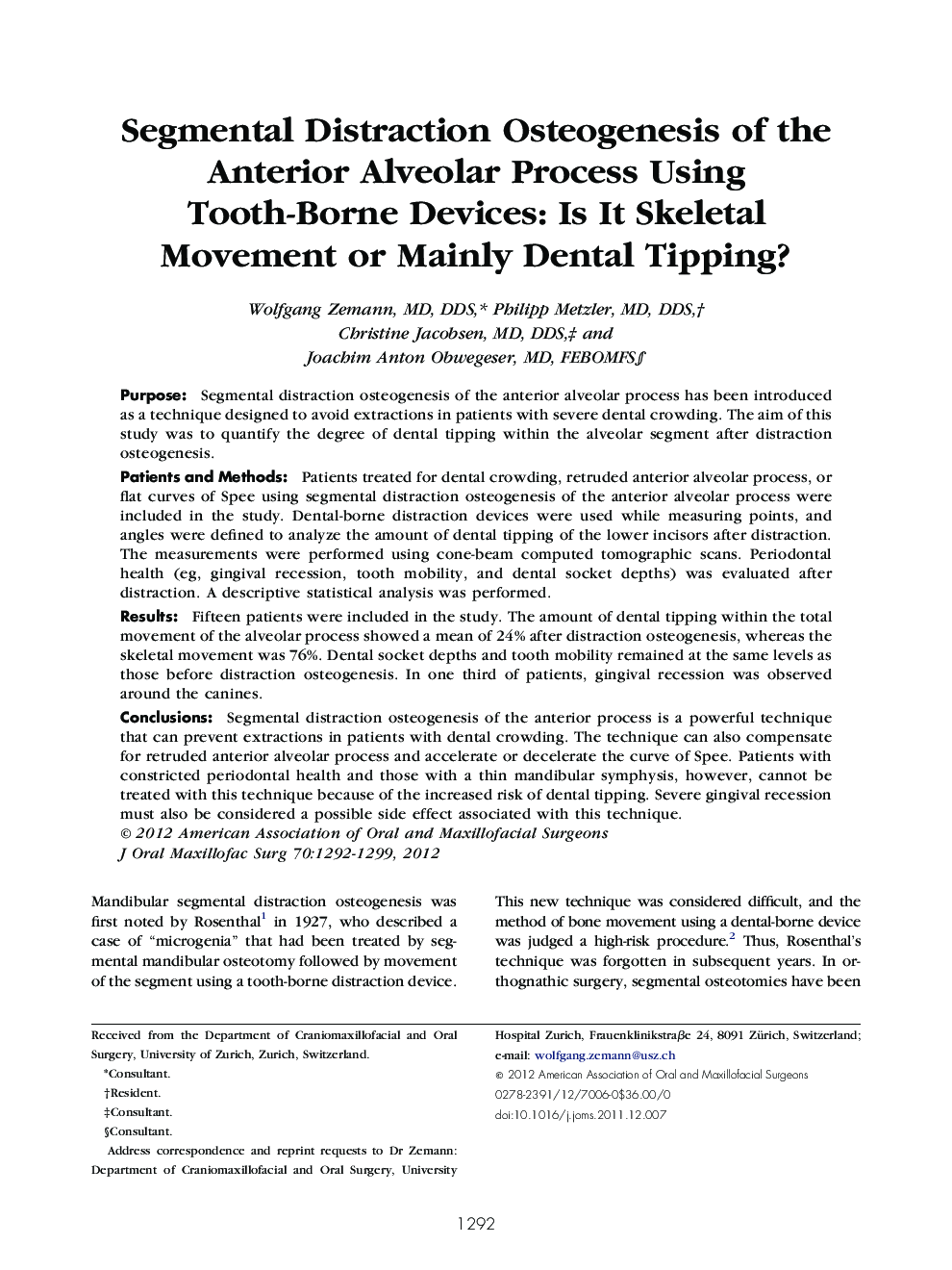| کد مقاله | کد نشریه | سال انتشار | مقاله انگلیسی | نسخه تمام متن |
|---|---|---|---|---|
| 3153084 | 1198023 | 2012 | 8 صفحه PDF | دانلود رایگان |

PurposeSegmental distraction osteogenesis of the anterior alveolar process has been introduced as a technique designed to avoid extractions in patients with severe dental crowding. The aim of this study was to quantify the degree of dental tipping within the alveolar segment after distraction osteogenesis.Patients and MethodsPatients treated for dental crowding, retruded anterior alveolar process, or flat curves of Spee using segmental distraction osteogenesis of the anterior alveolar process were included in the study. Dental-borne distraction devices were used while measuring points, and angles were defined to analyze the amount of dental tipping of the lower incisors after distraction. The measurements were performed using cone-beam computed tomographic scans. Periodontal health (eg, gingival recession, tooth mobility, and dental socket depths) was evaluated after distraction. A descriptive statistical analysis was performed.ResultsFifteen patients were included in the study. The amount of dental tipping within the total movement of the alveolar process showed a mean of 24% after distraction osteogenesis, whereas the skeletal movement was 76%. Dental socket depths and tooth mobility remained at the same levels as those before distraction osteogenesis. In one third of patients, gingival recession was observed around the canines.ConclusionsSegmental distraction osteogenesis of the anterior process is a powerful technique that can prevent extractions in patients with dental crowding. The technique can also compensate for retruded anterior alveolar process and accelerate or decelerate the curve of Spee. Patients with constricted periodontal health and those with a thin mandibular symphysis, however, cannot be treated with this technique because of the increased risk of dental tipping. Severe gingival recession must also be considered a possible side effect associated with this technique.
Journal: Journal of Oral and Maxillofacial Surgery - Volume 70, Issue 6, June 2012, Pages 1292–1299